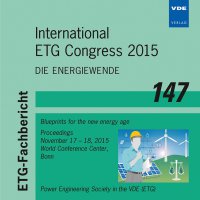A highly transparent method of assessing the contribution of incentives to meet various technical challenges in distributed energy systems
Conference: International ETG Congress 2015 - Die Energiewende - Blueprints for the new energy age
11/17/2015 - 11/18/2015 at Bonn, Germany
Proceedings: International ETG Congress 2015
Pages: 8Language: englishTyp: PDF
Personal VDE Members are entitled to a 10% discount on this title
Authors:
Spielmann, Verena; Beck, Hans-Peter (Institute of Electrical Engineering and Energysystems, TU Clausthal, Germany)
Bettinger, Carola (Institute of Banking, Financing and Accounting, Leuphana University Lüneburg, Germany)
Skau, Katharina; Fuchs, Clemens (Faculty of Agricultural and Food Sciences, Neubrandenburg University of Applied Sciences, Germany)
Beck, Hans-Peter (Energy Research Centre of Niedersachsen, Germany)
Abstract:
As a result of liberalisation of energy markets in Europe production and transmission/distribution of energy have been separated. Government controlled network operators focus on grid and system stability while stakeholders for producing and trading energy act in a market oriented way. These different objectives cause conflicts and new market mechanisms e.g. the market place for operating reserve had to be established. Due to the legal promotion of renewable energies (RE) and the increasing shares of RE now the energy production is also characterized by volatile solar and wind energy production as well as a high share of small RE plants installed on distribution network level. This leads to the following challenges addressed in this paper: In addition to incentives for system integration, more and more incentives for market integration of volatile RE are established, however the goals of both can be contrary. Therefore and due to the fact that RE plants are distributed among many small stakeholders acting under various conditions, the complexity of assessing the technical effects of incentive systems increases. Therefore this paper proposes a method for two-stage modelling (technical and stakeholder-based) of local energy systems in order to evaluate incentive systems for system as well as market integration. This method offers the possibility to change the inputs of incentive systems as well as the desirable objectives independently. Therefore the method shows if a particular incentive system supports one objective but contradicts to another one. As a result of separating business and technical simulation this method offers an understandable dimension on its interface. We implement the method on a case study of a farm operating a biogas plant. We show how incentives of direct marketing to local consumers with market premium affect the designing operating schedule, what operating schedule aiming load balancing would also be possible and what additional compensation payments would be necessary in order to give sufficient motivation for grid supportive running.


